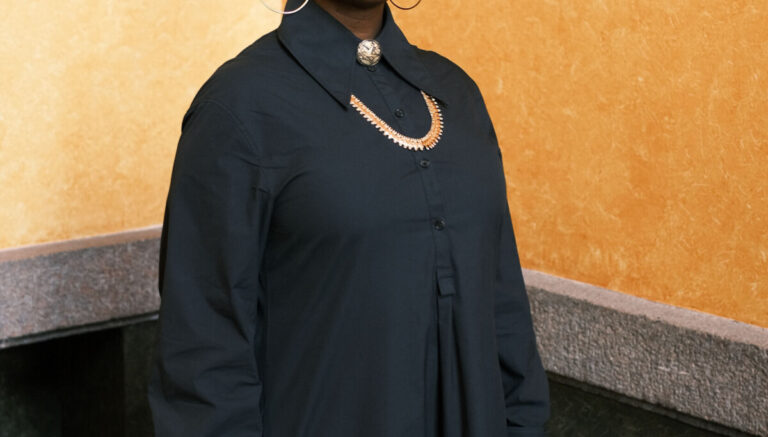BHMN
Black History Month is not just an American observance. This year, Oslo students are rallying together to weave Afrodiasporic culture and identity into Norway’s rich tapestry of cultural history.
– I came to the realization that we weren’t even addressing racism, and it was disheartening how far we lag behind,
reflects Maria Grazia Ines Habiyambere, a sound and music production student at Noroff. She is instrumental in organizing this autumn’s program for Black History Month Norway (BHMN), now in its sixth year. Funded by the Oslo municipality, her team dedicates 90 percent of their efforts as volunteers.
This year’s BHMN theme, Africa and the diaspora – living history, evokes the idea of diaspora—the dispersion of communities beyond their ancestral homelands, often tied by shared ethnicity or culture. Those of African descent have a rich heritage that spans the globe.
Now, let’s rewind to the summer of 2020. Amidst the chaos of COVID-19 precautions, interest in the Black Lives Matter movement surged, both internationally and nationally. Black squares graced social media feeds, while thousands took to the streets of Oslo, driving conversations about racism to the forefront of public discourse.
BLM: A Fading Interest?
But as those black squares vanish from Instagram feeds, has the fervor surrounding BLM diminished? Habiyambere notes a decline in engagement.
– For discussions surrounding Black identity, belonging, and rights in Norway, 2020 served as a wake-up call. I delved into Danish-Norwegian colonial history and thought, Wow, oh my God! We aren’t even discussing racism in Norway, she explains.
Oh my God! We’re not even talking about racism.
For Habiyambere, the 2012 murder of Trayvon Martin marked the beginning of her activism for the rights of Black individuals within Norway. She believes that her “wake-up call” highlights a concerning lack of dialogue around racism and an alarming ignorance of the nation’s historical context.
“Congo village” and the Legacy of the Slave Trade
Michelle Tisdel, a key figure at BHMN, notes that the response from the community has largely been encouraging.
– Since 2020, I’ve seen no stagnation in interest. Commitment remains high, she asserts.
Although Black History Month is rooted in American tradition, Tisdel emphasizes that the narratives surrounding dark-skinned individuals in Norway are unique. Habiyambere points out the importance of understanding that people of African descent were present in Norway long before the influx of immigrants in the 1960s and 70s.
Norway’s historical engagement with the transatlantic slave trade continued until 1850. The legacy of colonialism is profound; for instance, Denmark-Norway was involved in the exploitation of people. In 1914, Norway celebrated a centenary with the exhibition “Kongolandsbyen,” where 80 Congolese individuals were displayed in traditional garb for five months, drawing 1.4 million visitors.
Diversity and Black Identity
Professor Mette Andersson from the University of Oslo is currently researching anti-racism in Norway and believes it’s essential to remember the stories and connections that span the African diaspora.
Andersson points out that BHMN follows the path laid by other organizations aimed at empowering youth of African heritage in Norway.
One of the goals, past and present, is to cultivate pride in African heritage and bicultural identities among young individuals, she notes.
Recent years have witnessed a shift in both academia and public opinion surrounding colonialism and racism, Andersson observes. Since 2019, academia has made strides in discussing decolonization.
The public discourse ignited by BLM in 2020 has created new opportunities to address racism, she adds.
– Nothing is Apolitical
– These events aren’t exclusive to Black individuals, stresses Habiyambere.
As the organizers of BHMN clarify, their events are open to everyone, with an emphasis on the importance of diversity. Habiyambere is adamant about the necessity of anti-racism.
It is not the case that the events are only for black people.
– Nothing exists in a vacuum. Anti-racism can be practiced in every aspect of life, she adds:
– In Norway, there is a tendency toward passivity. You can’t afford to distance yourself, says Habiyambere.
Yet, despite growing interest from the public and an influx of new partners, the organizers acknowledge their outreach efforts remain limited due to financial constraints.
– We can’t spend on advertising, Tisdel admits.
– An Ongoing Struggle
– I believe it is essential for white Norwegians to attend events concerning Norwegian colonial history, as this is part of their heritage, Habiyambere asserts.
She emphasizes the need for a mixed audience to foster collective awareness. As BHMN looks toward the future, both Habiyambere and Tisdel hope that commitment to their mission will only grow.
– For me, BHMN is not merely about commemoration but about nurturing community, knowledge, and lasting awareness, Tisdel summarizes.

